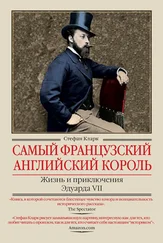Стефан Кларк - 1000 Years of Annoying the French
Здесь есть возможность читать онлайн «Стефан Кларк - 1000 Years of Annoying the French» весь текст электронной книги совершенно бесплатно (целиком полную версию без сокращений). В некоторых случаях можно слушать аудио, скачать через торрент в формате fb2 и присутствует краткое содержание. ISBN: , Издательство: Transworld Digital, Жанр: Старинная литература, на английском языке. Описание произведения, (предисловие) а так же отзывы посетителей доступны на портале библиотеки ЛибКат.
- Название:1000 Years of Annoying the French
- Автор:
- Издательство:Transworld Digital
- Жанр:
- Год:неизвестен
- ISBN:9781407067629
- Рейтинг книги:3 / 5. Голосов: 1
-
Избранное:Добавить в избранное
- Отзывы:
-
Ваша оценка:
- 60
- 1
- 2
- 3
- 4
- 5
1000 Years of Annoying the French: краткое содержание, описание и аннотация
Предлагаем к чтению аннотацию, описание, краткое содержание или предисловие (зависит от того, что написал сам автор книги «1000 Years of Annoying the French»). Если вы не нашли необходимую информацию о книге — напишите в комментариях, мы постараемся отыскать её.
1000 Years of Annoying the French — читать онлайн бесплатно полную книгу (весь текст) целиком
Ниже представлен текст книги, разбитый по страницам. Система сохранения места последней прочитанной страницы, позволяет с удобством читать онлайн бесплатно книгу «1000 Years of Annoying the French», без необходимости каждый раз заново искать на чём Вы остановились. Поставьте закладку, и сможете в любой момент перейти на страницу, на которой закончили чтение.
Интервал:
Закладка:
After the battle, as the plunderers moved around the battlefield chopping off limbs and heads so that they could strip the dead (and the not-quite-dead-until-someone-chopped-their-head-off) of their valuable chainmail, Normans and non-Normans alike knew that the fun was only just beginning. Before them lay the whole ‘green and pleasant land’ that William had salivated over all those years before, waiting to be picked clean.
The first thing the victorious William did was ride a few miles east to the port of Romney. One of his ships had blown off course and landed there, and the Norman invaders had all been killed, so William thought it only fair to massacre the townspeople.
He then headed inland to Winchester (King Alfred’s old capital) to loot the royal treasury, before turning north, to Berkhamsted, presumably just to give that town the only bit of excitement that it would ever experience. It was here that William took the surrender of the teenage Anglo-Saxon pretender to the throne, Edgar the Atheling (meaning noble). Sadly for Berkhamsted, though, William declined to accept the crown there, and demanded to be enthroned in London.
All the while, William’s men were plundering as they went, plunging the south of England into a chaos that it had forgotten since before Alfred the Great’s day. This was partly revenge on Harold’s old homeland of Wessex, but also a show of strength for the Anglo-Saxon earls in London, who were wondering how to react. Should they try to raise an army and resist, or swear allegiance to William and hang on to at least some of their possessions?
When William reached the outskirts of London, the locals demonstrated to the earls what they thought should be done – the men of Southwark attacked the invaders, annoying William so much that he burned the whole town and went off to ravage the surrounding countryside, destroying the recently harvested crops, killing peasants, and depriving Londoners of their main source of food.
William’s show of force seems to have shown the Anglo-Saxon earls which side their bread was buttered on (in fact, Normandy was now their only source of butter), and they voted to recognize William’s claim to the throne.
The new King of England was crowned on Christmas Day 1066, in Westminster Abbey. The venue was a political choice – the church had been built by Edward the Confessor, and it was here that the usurper Harold had been crowned just months before.
The ceremony must have been a bit like a shotgun wedding, with William surrounded by his soldiers while the gloomy Anglo-Saxons were forced to look on and witness the solemn handover of power. And as the crown was placed on William’s head, it was somehow inevitable that violence should break out. Not from rebels trying to break up the celebrations, though; when the new King received a congratulatory cheer from his followers, the Norman guards outside the abbey heard the raised voices and assumed that there was a riot going on. They began a pre-emptive attack on the crowd that had gathered in the abbey grounds, and before they realized their mistake, many Londoners were killed and several buildings were burnt. It was just a taste of things to come for England.
Astutely detecting an air of instability in his new realm, William built the Tower of London – first a wooden stockade and then, when the famous white Caen stone arrived, the basis of the present castle. One can imagine the Anglo-Saxon bitterness when William refused to use English materials, despite the reassurances of London builders that ‘if you want a white castle, you can’t do better than this Dover chalk, mate. Look at them cliffs – solid as, well, rock, innit?’
As well as building his stronghold in London, William sent his army on a tour of England, not to get themselves acquainted with the local folk dances, but to let the Anglo-Saxons know that they now had new masters. This the Normans did by building castles in pretty well every major town in the country, usually demolishing whole neighbourhoods to make room for fortresses within the town walls. In Lincoln, for example, 166 houses were destroyed, in Cambridge 27, Gloucester 16, and so on. There is no record of William applying for planning permission.
The home-wrecking was not confined to brownfield sites, either. Deciding that the New Forest needed a bit of a makeover, William evicted 2,000 people from its villages, so that the 75,000-acre expanse of woodland would form a giant hunting playground, empty of all human construction. Similar operations were carried out in forests all over England, and terrible punishments were imposed on Anglo-Saxons who dared to replace their destroyed or stolen crops by eating one of the new King’s royal deer, hares or hedgehogs – the penalty for poaching any animals was castration or amputation of hands and feet.
In the meantime, while his men were out demolishing houses and ethnically cleansing forests, William himself was busy doing admin, having taken on the exhausting task of confiscating some 1,422 manors that had previously belonged to Edward the Confessor and the Godwin family, as well as all the land in England that his men had completely ravaged, presumably on the grounds that its owners had let it fall into disrepair.
He was also amassing hoards of gold, jewels, cloth and other treasures, so that when he nipped back to Normandy in 1067 to see his wife and count his beached whales, even the snooty Parisians who saw William and his entourage were, in Zumthor’s words, ‘dazzled by the beauty of their clothing, which was embroidered with gold’.
William was careful to repay his investors – especially God. On the site of the Battle of Hastings, he built an abbey to give thanks for his victory, bluntly dubbing it Battle so that the Anglo-Saxons would never forget why it was there. And if you drive around Normandy today, you cannot fail to notice how many small towns have immense abbeys and cathedrals, all paid for with English money.
William’s brother, Odo, was the Bishop of Bayeux. He can be seen in the tapestry, riding into battle brandishing a heavy mace instead of a spear or sword – churchmen were only allowed to bash enemies’ brains out, not stab them, which would apparently have been ungodly. Thanks to Odo’s willingness to smash skulls in the service of his brother and the Lord, he amassed a fortune which would, in today’s money, have been worth an estimated £55 billion. He lavished much of this wealth on himself, but also a fair portion on a state-of-the-art cathedral that rises up from the centre of the small Norman market town of Bayeux like a gold brick on a pile of pebbles.
Other Norman churchmen received lesser, albeit substantial, windfalls. Jesus might once have said something about rich men having less chance of getting into heaven than a camel had of passing through the eye of a needle, but the Norman Church didn’t need to worry about that – they now had enough cash to make giant needles.
Step 5: From Hastings to Domesday
The new King William had a lot less time than modern royals to go to nightclubs and do charity work – he had to charge up and down the country telling the English to behave themselves. In 1067 alone, there were revolts in Northumbria, Hereford, Exeter and the vital port of Dover, which was very nearly recaptured from the Normans.
This rebellion in Dover was led by one Eustace of Boulogne, who had fought in William’s army at Hastings and then changed sides, probably hoping to rally Anglo-Saxon support for his own claim to the English throne – he was the brother-in-law of Edward the Confessor. William forgave Eustace and allowed him to return to the Norman fold, because he needed all the allies he could get – in 1069, for example, Harold’s mother Gytha and his widow Edith, who were still a bit peeved about those 1,422 manors they’d lost, invaded Devon, and it took all of the Franco-Norman forces in the southwest to repel them.
Читать дальшеИнтервал:
Закладка:
Похожие книги на «1000 Years of Annoying the French»
Представляем Вашему вниманию похожие книги на «1000 Years of Annoying the French» списком для выбора. Мы отобрали схожую по названию и смыслу литературу в надежде предоставить читателям больше вариантов отыскать новые, интересные, ещё непрочитанные произведения.
Обсуждение, отзывы о книге «1000 Years of Annoying the French» и просто собственные мнения читателей. Оставьте ваши комментарии, напишите, что Вы думаете о произведении, его смысле или главных героях. Укажите что конкретно понравилось, а что нет, и почему Вы так считаете.












